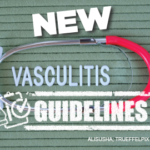With the support of its membership, the ACR publishes clinical practice guidelines in multiple disease areas based on the best available clinical and scientific data. These aim to support health professionals treating rheumatology patients to give the best possible care. Like any set of medical guidelines, ACR guidelines are based on evidence of several different levels, and guideline writers must often work with incomplete information. Clinicians often desire guidance for particular questions that do not have a clear-cut answer in the medical literature, and they look to the ACR guidelines to help fill this void.
Here, we discuss the rigorous process by which writers develop the guidelines, the limits of the clinical data available and possible directions for greater research and future guideline development.
Background: Evolution & Role of Clinical Guidelines
Although the push toward creating standardized medical protocols for clinicians began decades earlier, the modern age of guidelines began with a 1990 Institute of Medicine report. This report defined clinical practice guidelines as “systematically developed statements to assist practitioner and patient decisions about appropriate healthcare for specific clinical circumstances.”1 Since that time, a proliferation of clinical guidelines across all medical specialties, including rheumatology, has occurred. The guidelines are intended to help clinicians stay abreast of the ever-expanding evidence base.2
ACR guideline authors make clear that clinical practice guidelines are not prescriptive and should be used by clinicians and patients only as a guide for discussion. ACR guidelines attempt to acknowledge this limited role in providing clinicians with relevant information to help guide (but not mandate) treatment. Optimal treatment requires a clinician’s assessment and collaborative decision making on the part of patients and providers, and consideration of clinical practice guidelines and supporting evidence. Clinicians must understand the limits of any set of clinical practice guidelines and how they may best be used to improve clinical care. Guidelines are never meant to replace clinical judgment or establish a rigid protocol for addressing all individuals with a specific rheumatologic condition.3
With the expansion of clinical practice guidelines across specialties, increasing scrutiny has been placed on the evidence base and the processes used to create guidelines. Efforts have been made to improve guidelines by increasing transparency, standardizing guideline development methods and managing conflicts of interest.4 One important remaining challenge is the evidence base. In many cases, the highest grade evidence (from randomized controlled trials) is simply not available to support the majority of recommendations made.5



